Best Scala Programming Books to Buy in December 2025
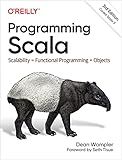
Programming Scala: Scalability = Functional Programming + Objects


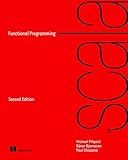
Functional Programming in Scala, Second Edition



Programming in Scala Fifth Edition


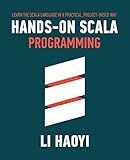
Hands-on Scala Programming: Learn Scala in a Practical, Project-Based Way


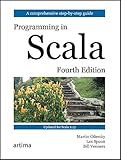
Programming in Scala



Functional Programming in Scala


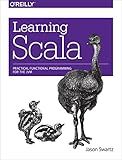
Learning Scala: Practical Functional Programming for the JVM


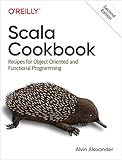
Scala Cookbook: Recipes for Object-Oriented and Functional Programming


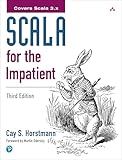
Scala for the Impatient


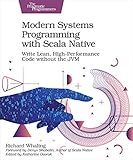
Modern Systems Programming with Scala Native: Write Lean, High-Performance Code without the JVM


In Scala, asynchronous programming can be handled using various techniques such as using callbacks, future and promise, or using libraries like Akka. Let's explore each of these approaches briefly:
- Callbacks: Callbacks are functions that are passed as arguments to other functions and are invoked when an asynchronous operation completes. In Scala, you can define a callback to handle the result or error of an asynchronous operation. While callbacks are simple to use, code can become difficult to read and manage as the number of asynchronous operations increase.
- Future and Promise: The Future and Promise classes provide a more manageable approach to handle asynchronous programming. A Future represents a value that is computed asynchronously and may not be available yet. It allows you to chain operations, transform results, or combine multiple futures together. On the other hand, a Promise is a writable, single-assignment container of a future value, which allows you to complete a future with a value or an exception.
- Akka: Akka is a popular actor-based toolkit for building highly concurrent, distributed, and resilient applications. It provides a powerful way to handle asynchronous programming by using actors as independent, isolated units of computation. Actors communicate with each other by passing messages, and they can also handle failures and supervise other actors. Akka provides abstractions like ActorSystem, Actor, and ActorRef to handle asynchronous tasks efficiently.
When dealing with asynchronous programming, it's crucial to consider error handling, backpressure, and resource management. You should also be aware of potential pitfalls like race conditions, deadlocks, or excessive resource consumption. Choosing an appropriate approach depends on the complexity of your application and the level of control you need over concurrency and parallelism.
How to perform non-blocking I/O operations in Scala?
In Scala, you can perform non-blocking I/O operations using several approaches, including:
- Futures: Use the Future construct in the scala.concurrent package. This allows you to asynchronously perform I/O operations and receive the results as a Future value. You can use combinators like map, flatMap, or onComplete to compose multiple asynchronous operations. Futures provide a higher-level abstraction for managing asynchronous computations.
Example:
import scala.concurrent.Future import scala.concurrent.ExecutionContext.Implicits.global
val ioOperation: Future[String] = Future { // perform non-blocking I/O operation // return the result "I/O operation completed" }
ioOperation.onComplete { case Success(result) => println(s"Result: $result") case Failure(error) => println(s"Error: $error") }
- Reactive Streams: Use a library that implements the Reactive Streams specification, such as Akka Streams. Akka Streams provides a reactive programming model for building asynchronous and backpressure-driven stream processing applications. It allows you to define complex stream processing pipelines and handle I/O operations in a non-blocking manner.
Example:
import akka.actor.ActorSystem import akka.stream.ActorMaterializer import akka.stream.scaladsl.Source
implicit val system = ActorSystem("my-system") implicit val materializer = ActorMaterializer()
val source = Source.single("Input data") val sink = Sink.foreach[String](println)
source.runWith(sink)
- Asynchronous I/O libraries: Use asynchronous I/O libraries like Netty or Finagle, which provide non-blocking I/O operations with support for building scalable, high-performance networked applications. These libraries typically offer abstractions for handling I/O events and allow you to write non-blocking code with callbacks or reactive-style programming.
Example (using Netty):
import io.netty.bootstrap.Bootstrap import io.netty.channel.{ChannelFuture, ChannelInitializer, EventLoopGroup} import io.netty.channel.nio.NioEventLoopGroup import io.netty.channel.socket.SocketChannel import io.netty.channel.socket.nio.NioSocketChannel
val group: EventLoopGroup = new NioEventLoopGroup()
val bootstrap: Bootstrap = new Bootstrap() .group(group) .channel(classOf[NioSocketChannel]) .handler(new ChannelInitializer[SocketChannel]() { def initChannel(ch: SocketChannel) { ch.pipeline().addLast(new MyHandler()) } })
val future: ChannelFuture = bootstrap.connect("example.com", 8080) future.addListener((f: ChannelFuture) => { if (future.isSuccess) { println("Connection established.") } else { println("Connection attempt failed.") } })
Note that the exact approach you choose may depend on your specific use case, requirements, and existing libraries or frameworks being used in your project.
What is the purpose of the Future.firstCompletedOf method in Scala?
The purpose of the Future.firstCompletedOf method in Scala is to create a new Future that completes and returns the result of whichever Future from the given iterable collection completes first.
This method allows you to handle concurrent computations in a non-blocking manner and retrieves the result of the fastest computation among a set of Future instances. It is particularly useful when you have multiple independent computations and want to process the result of the first one that completes, ignoring the others.
What is the role of the ExecutionContextExecutor in Scala's asynchronous programming?
The ExecutionContextExecutor is a key component in Scala's asynchronous programming model. It is responsible for executing tasks asynchronously and managing their lifecycles.
When using Scala's Future or other asynchronous abstractions, you can provide an implicit ExecutionContextExecutor to specify where and how the asynchronous tasks should be executed. It defines the execution context for the tasks, which determines the threading strategy and resource allocation.
The ExecutionContextExecutor provides methods for submitting tasks to be executed asynchronously, and it manages the execution of these tasks by allocating threads or using thread pools. It ensures that the tasks are executed concurrently and in an efficient manner.
By separating the execution context from the task implementation, Scala allows you to easily switch between different execution strategies. You can use different ExecutionContextExecutors for different types of tasks, such as CPU-bound tasks or I/O-bound tasks, depending on their requirements.
Overall, the ExecutionContextExecutor plays a crucial role in managing the execution of asynchronous tasks in Scala, allowing for efficient and concurrent programming.
What is the purpose of the Async/Await pattern in Scala's asynchronous programming?
The purpose of the async/await pattern in Scala's asynchronous programming is to simplify the syntax and flow control of asynchronous code. It allows developers to write asynchronous code in a more sequential and imperative manner, similar to how they would write synchronous code.
The async keyword is used to mark a block of code that contains await expressions. An await expression suspends the execution of the block until the awaited value or future is available. This allows the code to be written in a more natural and linear style, without the need for explicit callbacks or chaining of futures.
By using the async/await pattern, developers can write asynchronous code that is easier to understand, read, and maintain. It reduces the complexity and boilerplate code associated with callback-based or future-based asynchronous programming models.
What is the concept of "futures and promises" in Scala?
In Scala, "futures and promises" is a concurrent programming concept that provides a way to perform asynchronous computations. It allows you to work with computations that may not have completed yet, while still being able to perform other tasks concurrently.
The concept revolves around two key entities - futures and promises:
- Futures: A future represents a value that may not be available yet. It is a placeholder for the computed result of an asynchronous operation. You can think of a future as a container that eventually holds a value.
- Promises: A promise is like a writable cell that completes a future. It is a producer of a future's value. You can think of a promise as a sort of agreement or contract to produce a value in the future.
Using futures and promises, you can create asynchronous computations that can be composed, transformed, and combined in a declarative and concurrent manner. Futures allow you to handle computations as values, while promises let you control and fulfill those computations.
Scala provides built-in support for futures and promises through the scala.concurrent package. You can create a future using the Future object and a promise using the Promise object. By using various methods and combinators provided by Scala's concurrency libraries, you can handle, transform, and chain computations asynchronously without blocking the main execution thread.
Overall, futures and promises enable concurrent and non-blocking programming paradigms, making it easier to write concurrent and responsive applications in Scala.
How to handle slow consumers with backpressure mechanisms in Scala?
In Scala, you can handle slow consumers with backpressure mechanisms using the built-in Akka Streams library. Akka Streams provides various powerful backpressure handling techniques to deal with slow consumers and ensure a smooth flow of data.
Here are some ways to handle slow consumers with backpressure mechanisms in Scala:
- Buffering: Akka Streams allows you to buffer elements at strategic points in the stream to smooth out the flow. You can add buffer operators like buffer, bufferSize, or conflate to buffer elements until the downstream is ready to consume them. This way, slow consumers won't cause a complete halt in data processing.
- Throttling: Akka Streams provides throttling mechanisms like throttle or throttleShape to control the maximum rate at which elements are emitted downstream. You can set a maximum rate limit to throttle the flow and avoid overwhelming slow consumers.
- Backpressure handling operators: Akka Streams provides specific operators to handle backpressure. For example, mapAsync and mapAsyncUnordered can be used to limit the number of concurrent operations performed by the slow consumer or to distribute load evenly across multiple consumers.
- Time-based backpressure: You can introduce time-based backpressure mechanisms to handle slow consumers. By using operators like groupedWithin, you can group elements and emit them downstream after a certain time window. This allows consuming elements in batches, accommodating slow consumers.
- Adaptive backpressure: Akka Streams also supports adaptive backpressure mechanisms. You can use operators like balance and mergePrioritized to dynamically adjust the flow rate based on consumer demand. This allows the stream to automatically adapt to the speed at which the consumer can handle data.
Remember, backpressure mechanisms may also require appropriate tuning of the configuration parameters and careful consideration of your specific use case.
